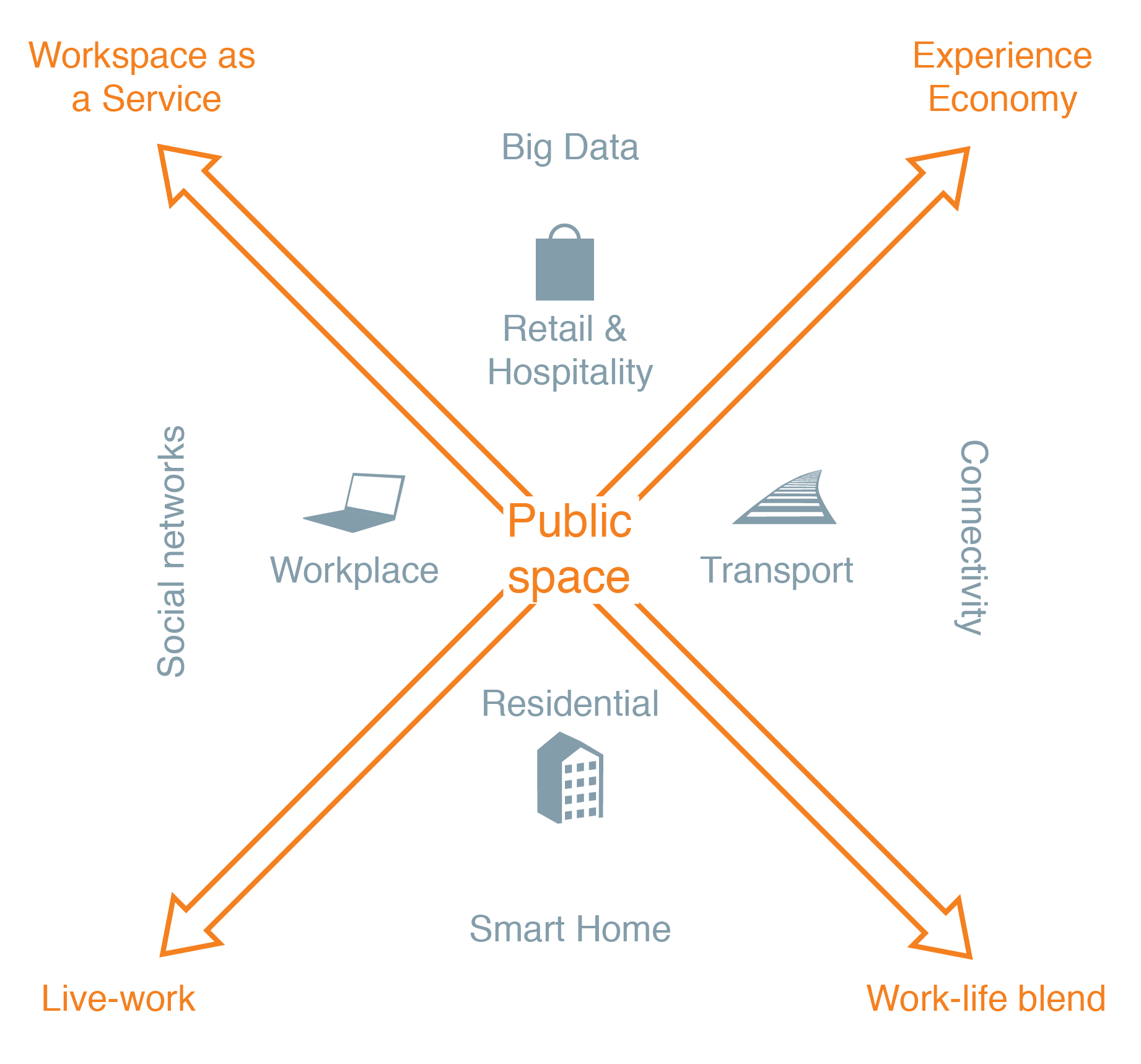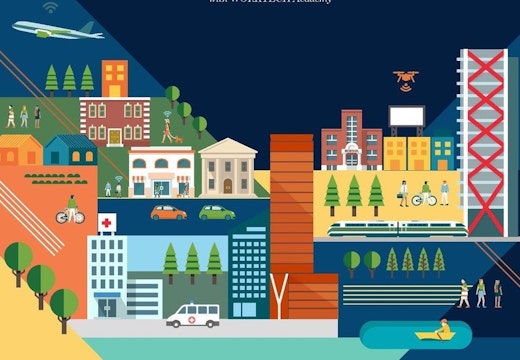Intermix: a new concept for the smart precinct of the future
How can the smart precinct of the future harness new technologies to create intelligent, integrated places to work and live? A new discussion paper from developer Mirvac, co-produced with WORKTECH Academy, presents some models
Australian developer Mirvac has unveiled a new discussion paper on the future of smart precincts as part of WORKTECH Sydney 2017, which took place at Darling Harbour, Sydney, on 8-9 March 2017.
Co-produced with WORKTECH Academy and entitled ‘The Intermix Approach: Activating the Smart Precinct’, the Mirvac paper outlines leading development approaches and best practice models for digitally enabled districts, or ‘smart precincts’, that will shape our cities.
In launching the Intermix report, Paul Edwards, General Manager of Workplace Experiences at Mirvac, explained that developers must start to look beyond the footprint of the smart buildings they are developing to ensure they create smart, enabled precincts.
As a term, Intermix defines a viewpoint on a growing trend in smart, mixed-use precincts that are emerging from London and New York to Seoul and Sydney.
The design of mixed-use developments – incorporating workspace, retail, hospitality, leisure, residential, education, and transport – is evolving to integrate physical experiences with smart technologies, to strengthen the community fabric of an area and support an emerging tech-led economy.

Four core typologies
Intermix builds on current macro trends leading to the rise of ‘hybridised’ spaces and the discussion paper identifies four core typologies of the Intermix approach:
- Emporium, featuring a bustling shopping centre as the dominating element
- Haven, which has a smart home residential quarter at its core
- Interchange, where a transport hub takes centre stage; and
- Enterprise, a workspace-led site.
Mirvac is currently delivering a variety of smart precincts across Australia – for example, the Australia Technology Park (ATP) in Sydney, which is designed to create an environment for collaboration and exchange, imaginatively mixing workspace with public and recreational facilities. Scheduled for completion in 2020, ATP will provide over 90,000 square metres of office space, extensive public domain and be home to approximately 18,000 workers.
‘ATP is an ambitious urban regeneration project that will create an advanced innovation district as well as a thriving community precinct where people connect culturally, socially and physically,’ explains Edwards. ‘An example of the Enterprise Model discussed in the Intermix report, ATP has very high connectivity requirements built into a dynamic workspace campus, which allows building managers to capture information and adapt the environment to better support health and wellbeing.’
An example of the Interchange Model is Mirvac’s 664 Collins Street, Melbourne. Sitting directly across from Melbourne’s Southern Cross Station, AGL’s new commercial building takes advantage of the city’s largest transport hub, reducing commute times and infiltrating the iconic architecture of the station.
Key Intermix principles
The discussion paper also defines eight Intermix principles: one connected community; shaping the sharing economy; fluid boundaries and flow; the curated precinct; flexible space matters; makerspace culture; the wellbeing dividend; and destination, not dead zone.
Jeremy Myerson, Director of WORKTECH Academy, who co-authored the paper, explains, ‘Even in the world’s leading metropolitan cities, there are business districts that become dead zones on the weekend and after hours.
‘A smart precinct is curated to remain lively, dynamic and “always-on” by offering retail, hospitality and workspace services, as well as good transport links. A smart precinct ensures the varied character of city districts is cultivated and central to its design. If activated correctly, a smart precinct will become a destination.’
In this video interview with WORKTECH Academy, Mirvac’s Paul Edwards stresses the importance of transcending physical barriers to achieve a smart precinct.








